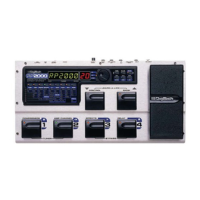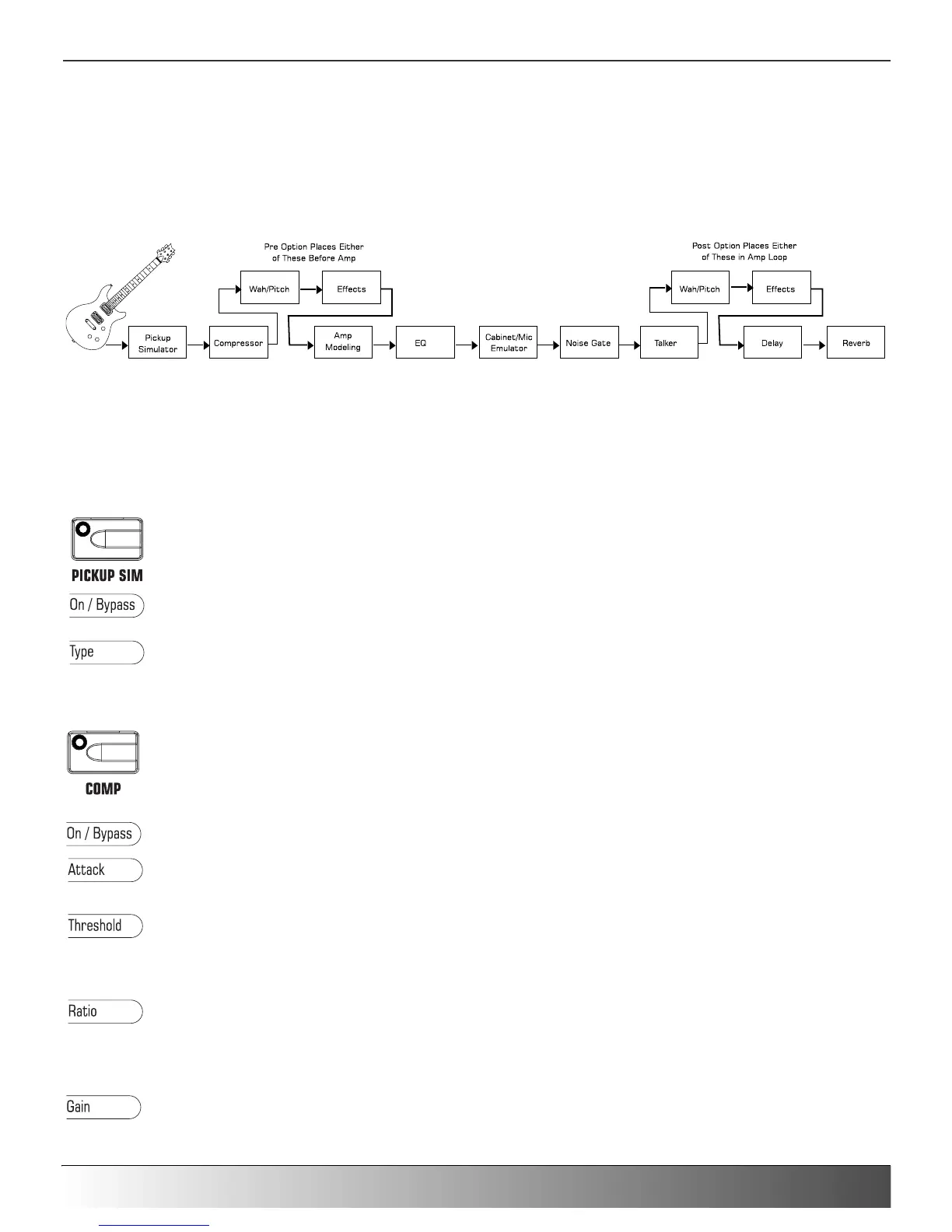Section Three - Effects and Parameters
About the Effects
The RP2000 can be thought of as several different “virtual” amplifiers, and individual, hi-tech stomp boxes.With stomp
boxes, the order in which they are connected can make a big difference in how good the overall sound is.Whether the
stomp boxes are placed before the amp, or in the amp’s effects loop will also make a difference.The RP2000 has the
Effects connected in the most logical, and best sounding order. However, you do have the choice of running the effects
found in the Wah/Pitch, and Effects columns either before or after the Amp Modeling.
Effect Definitions
Each Effect within the RP2000 is fully programmable to suit your personal tastes and application. Understanding how
these Effects will alter the sound, and how each Parameter will alter the Effect will help you achieve the sound you are
looking for.The following overview of the RP2000’s effects outlines what each Effect and Parameter does.
Pickup Simulator
The Pickup Simulator applies the warmth and thickness of a double coil humbucker pickup to a single coil
guitar, or the unique thin sound of a single coil pickup to a guitar with a humbucker.This allows you to
have the best of both worlds without having to change guitars during a performance.
This Parameter turns the Pickup Simulator on and off.
The Type Parameter selects whether you are trying to make a humbucker sound like a single coil (dis-
played as hb>sc), or a single coil sound like a humbucker (displayed as sc>hb).
Compressor
The Compressor in the RP2000 can be used to increase sustain, and tighten up guitars.A Compressor sets
boundaries for a signals strength.When a signal exceeds the set boundary, it is forced back into the set
boundary.As the signal fades to a point where it no longer exceeds the boundary, the compressor expands
the signal strength and increases sustain. Compression Parameters are as follows:
This Parameter turns the Compressor on and off.
The Attack is the length of time it takes the Compressor to to compress the signal.Attack times include:
slow, medium, and fast.
This parameter tells the Compressor when to start compressing. It is the signal strength required before
the compression kicks in. Low Threshold settings (larger negative numbers) will activate the Compressor
with weaker signals. Higher settings will require a stronger signal to activate compression. Parameter
ranges from -60 dB to 0 dB.
Controls the amount of compression applied to the signal once the Threshold has been exceeded.A Ratio
of 2:1 means that when an incoming signal exceeds the threshold by 2 dB, the compressor will only allow
the output signal to increase by 1 dB. Higher settings yield a tighter, sound and increase sustain. Lower
settings allow better dynamics. Ranges from 1.2-1(1.2 to 1) to inf-1 (infinity to 1).
This is the output volume from the Compressor.This parameter should be used to balance the level of the
Compressor in order to achieve unity gain. It is possible to clip other effects in the RP2000 by setting the
Compressor Gain too high. Ranges from 0 dB to 20 dB in 1 dB increments.
Page 13
Section Three - Effects and Parameters
RP2000 User’s Guide

